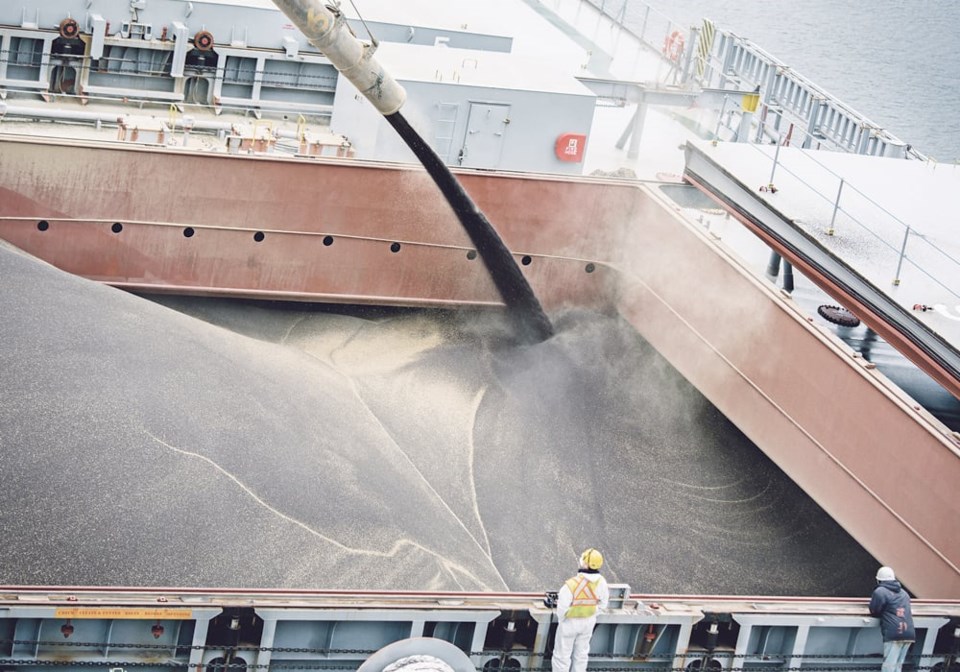SASKATOON — Canada can still recover from its slow start to the 2023-24 canola export campaign, says an analyst.
Exports are running about one million tonnes behind the pace needed to meet Agriculture Canada’s target of 7.7 million tonnes, said Chuck Penner, analyst with LeftField Commodity Research.
Sales to China have been particularly lacklustre.
However, the country purchased 450,000 tonnes of the commodity in November, with most of that 小蓝视频 supplied by Canada.
Penner made the remarks during his recent market outlook presentation for the Saskatchewan Mustard Development Commission’s annual general meeting.
Most of the presentation was about mustard but he touched on a few major crops at the end.
His advice to canola growers is to wait it out a little longer. China is an unpredictable buyer and things can change in a hurry.
“I wouldn’t be panicking about the canola market yet,” said Penner.
He added that domestic crush is running 350,000 tonnes ahead of Agriculture Canada’s estimated pace and will likely reach 11 million tonnes by the end of the year.
The other factor to keep in mind is that canola’s seasonal highs are usually in the April-May period.
Many growers wonder what is wrong with the wheat market. Global ending stocks are forecast at their lowest level in eight years, yet futures prices have been ho-hum.
Penner believes the U.S. Department of Agriculture has failed to pick up on the fact that debt and foreign exchange problems are limiting demand in important wheat markets such as the Middle East and North Africa.
The exception is spring wheat demand, which has been exceptionally strong.
Canada’s exports are running one million tonnes ahead of last year’s record pace.
“We’re really going to be tight on spring wheat stocks by the end of the year,” he said.
Canada’s situation has not been enough to push Minneapolis wheat futures higher, but it has resulted in strong basis levels.
Russia’s phenomenal export program appears to be slowing down, which will create even more opportunities for Canada.
Another bullish factor for the wheat market is that the USDA pegged U.S. winter wheat-seeded area at 34.4 million acres, well below trade expectations of 35.8 million acres.
Canadian durum supplies are only slightly larger than they were during the 2021-22 drought year, yet prices haven’t responded.
“People are saying, ‘Well, geez, what’s going on?’” said Penner.
“Well, Turkey is going on.”
The country, which has never exported more than 100,000 tonnes in the past, will likely .
“So, all our big fall push of durum exports got taken by Turkey and a little bit by Russia as well,” he said.
Turkey grew 4.5 million tonnes of the crop, up from the usual four million tonnes. But that wasn’t the problem.
A couple of years ago Turkey had a terrible crop and the government agreed to allow pasta manufacturers to use milling wheat in place of durum, and that policy is still in place.
It is pushing Turkish durum out the door at bargain prices into the European Union.
However, Turkey is running out of exportable supplies and Russia has temporarily banned exports, so buyers will be forced to come back to Canada and the United States in the second half of the year.
“We’re not going to expect a runaway rally in durum because we lost about half of the year of our exports, but we should see some strength,” said Penner.
There has been bad news on the barley front as well. China has dropped its punitive 80 percent tariff on , which is kicking Canadian supplies out of that hugely important market.
“That’s why the feed barley market just continues to sag,” he said.
Stiff competition from a plentiful U.S. corn crop is also a problem. About 400,000 tonnes of the feed crop came into Western Canada in November.
The market for malting barley in the U.S. and Canada is also soft.
“People are drinking all this lousy White Claw stuff instead of drinking beer,” said Penner.
“It has been a real shift in the marketplace.”
He is forecasting nearly two million tonnes of barley ending stocks in 2023-24, up from less than 750,000 tonnes last year.
Penner expects the feed barley market to follow corn prices closely because the north-south trade route is well established after the drought of 2021.
“As soon as there’s a $5 or $10 a tone difference, boom, it’s corn coming in,” he said.
Penner expects a “considerable” drop in Canadian barley acres in 2024.
His parting thought for growers was that they should rid themselves of the outdated notion that Canada’s production dictates world prices.
That isn’t even true for niche crops anymore. Russia has become a major competitor in peas, Turkey disrupted the durum market this year while Australia grew more red lentils than Canada.
Contact [email protected]




